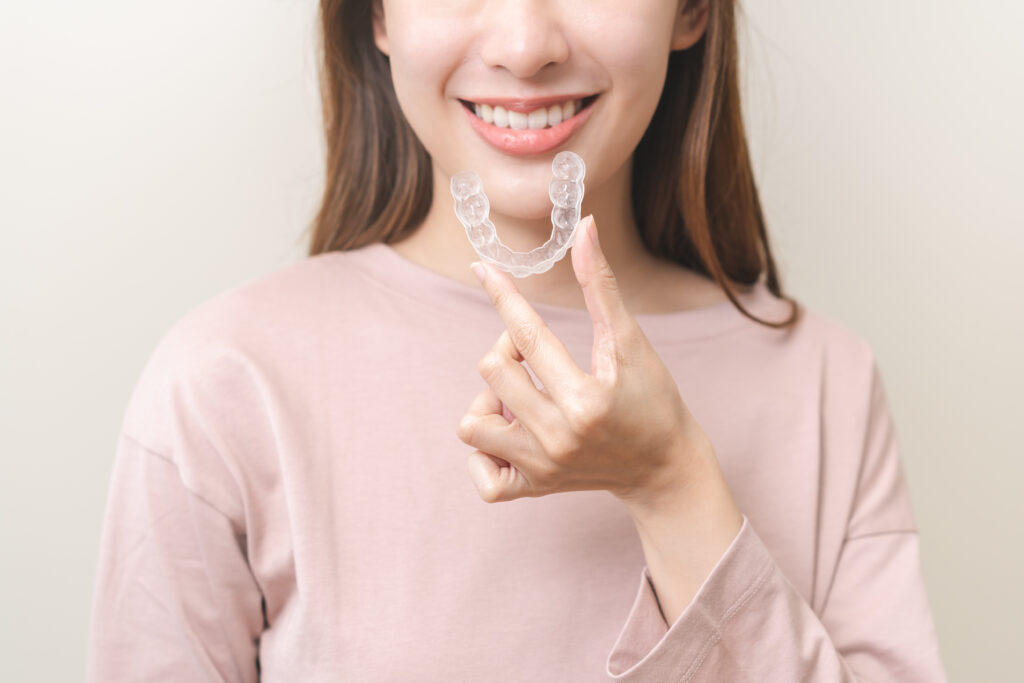
If your teeth have alignment issues, you may be considering teeth straightening options like Invisalign. Many people like Invisalign for its convenience and discreet appearance, but can it address all types of teeth misalignment?
This guide will walk you through the dental conditions that Invisalign can correct and what conditions it is unsuitable for.
Teeth Misalignment Issues
Invisalign is a clear aligner that gently moves teeth into optimal positions. It can address the following common tooth misalignment conditions.
Overbite
An overbite, or a “deep bite,” occurs when the upper front teeth overlap widely over the lower front teeth. While a slight overbite is normal, a pronounced one can lead to dental complications, including enamel wear, jaw discomfort, and difficulty biting or chewing.
Invisalign can help reduce excessive overbite by applying gradual pressure to reposition the teeth.
Underbite
An underbite is seen when the lower teeth juts outward farther than the upper front teeth. This misalignment can result from an oversized lower jaw, an underdeveloped upper jaw, or both. Left untreated, an underbite can cause chewing problems, speech difficulties, and premature wear on teeth.
Invisalign clear aligners are effective for many underbite cases. It aligns the teeth to improve bite function and aesthetics.
Open Bite
An open bite appears when the upper and lower front teeth don’t meet when the mouth is closed, creating an opening between them. This can affect a patient’s smile and their ability to bite into food properly.
Invisalign clear aligners can treat many cases of open bite by applying precise pressure to bring the teeth together, making it easier to bite and chew and achieving a more balanced smile.
Crowding
Crowding develops when the jaw has insufficient space for all the teeth to fit and align properly, leading to overlapping or crooked teeth. Crowded teeth may appear unsightly and make it difficult for patients to clean between their teeth, making them at risk for plaque buildup and gum disease.
Invisalign clear aligners can effectively create space and align crowded teeth, leading to a healthier and more aesthetically pleasing smile.
Functional Issues
Besides improving teeth alignment, Invisalign can address jaw misalignment and bite function. Jaw misalignment refers to cases where the upper and lower jaws don’t align properly when the mouth is closed. This can cause uneven wear on teeth, muscle strain, and even temporomandibular joint (TMJ) pain.
Invisalign can help improve mild to moderate jaw misalignment issues by guiding teeth into positions that promote better jaw alignment. For severe cases, additional treatments may be necessary.
Dental Issues Invisalign Cannot Address
While Invisalign is effective for many dental issues, there are more complex cases where traditional braces or other orthodontic treatments are more suitable. Here are some situations where Invisalign may not be the ideal choice:
Severe Jaw Misalignment
Invisalign clear aligners may not provide the necessary correction for patients with significant jaw misalignment or severe skeletal discrepancies. Cases involving major jaw position adjustments often require orthodontic appliances, such as metal braces, or even surgical intervention.
Extreme Tooth Rotation
If a tooth is severely rotated—typically beyond 20 degrees—it may be challenging for Invisalign to correct the alignment effectively. Clear aligners work best for mild to moderate rotations, but extreme rotations often require the precise force application that only braces can achieve.
Large Gaps Between Teeth
While Invisalign can close small to moderate gaps, huge gaps may be difficult to correct solely with aligners. Traditional braces may be recommended to achieve optimal results, especially if the gaps exceed 6mm.
Teeth in Need of Vertical Adjustments
Cases requiring significant vertical movements, such as for patients with short teeth or uneven gum lines, may not be suitable for clear aligners. Braces can apply a stronger, more controlled force in these situations, helping to achieve better vertical alignment of the teeth.
Invisalign Cost in Singapore
The cost of Invisalign in Singapore can vary depending on the complexity of the case, the number of clear aligners required, and the specific clinic or orthodontist providing the treatment. Generally, Invisalign treatments in Singapore cost between SGD 3,000 and SGD 6,000.
While the cost of Invisalign may be higher than traditional braces, many patients consider the investment worthwhile due to the benefits of discreet and comfortable treatment.
Get a consultation for Invisalign
Invisalign clear aligners are a versatile solution for many common dental issues. With proper guidance from a qualified dentist, you can determine if Invisalign is the right solution for your needs.
At Orchard Scotts Dental, we’re ready to advise you and share the best solutions for all your teeth issues. Consult us today.


